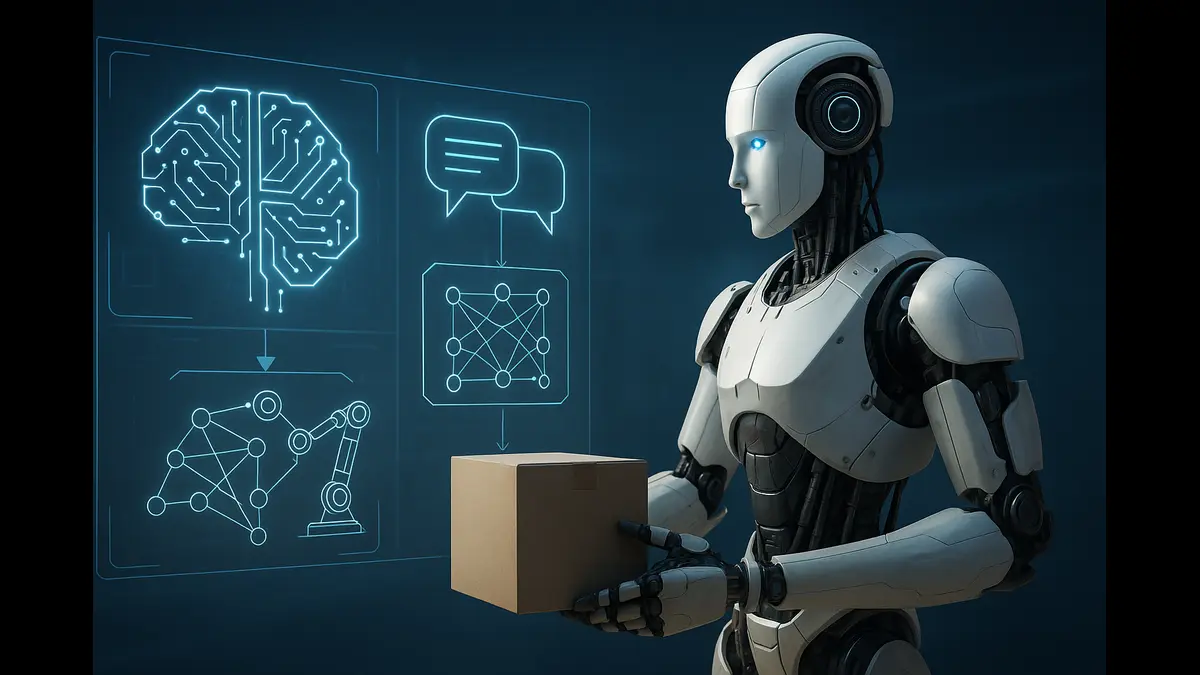
Explore how AI-powered virtual employees are reshaping the modern workplace. This in-depth article covers their benefits, risks, and a framework for responsible, inclusive adoption in forward-thinking organizations.
Artificial intelligence (AI) is no longer confined to research labs or niche automation use cases. As of 2025, the AI revolution is marching straight into corporate boardrooms — not merely as a tool, but as a co-worker. One of the boldest developments on this front comes from Anthropic, whose Chief Information Security Officer recently confirmed that AI-powered virtual employees will begin integrating into enterprise systems as early as next year.
These AI entities won’t just respond to queries or analyze reports. They’ll have defined roles, access credentials, persistent memory, and even performance metrics — much like their human counterparts. For business leaders, this development represents both a tantalizing opportunity and a sobering responsibility.
What Are Virtual AI Employees?
Virtual AI employees are autonomous software agents powered by large language models (LLMs) and reinforcement learning, designed to execute tasks traditionally handled by human employees. Unlike simple bots or RPA (robotic process automation) tools, these AIs can:
Communicate fluently
Access corporate systems
Learn and evolve from contextual feedback
Hold roles like analyst, customer associate, or assistant product manager
Anthropic’s vision includes assigning these virtual employees unique digital identities, complete with corporate accounts and role-based access.
The Business Case: Why Companies Are Interested
Pros:
24/7 Productivity
AI agents don’t take breaks or vacations. Businesses can maintain round-the-clock support, operations, or analysis.Cost Efficiency
While the upfront cost of integration may be significant, the long-term ROI can be immense. AI agents reduce reliance on large workforces for repetitive tasks.Scalability
AI employees can scale up or down almost instantly. Need 10 new onboarding agents for a product launch? Spin them up in hours.Error Reduction in Routine Work
When trained and supervised correctly, AI agents can reduce manual errors in data entry, report generation, and more.Consistent Service
Unlike humans, AI doesn’t have mood swings or fatigue. This makes them ideal for customer-facing roles that demand consistency.
The Risks and Challenges
Cons:
Cybersecurity Exposure
Each AI identity becomes a potential attack vector. Improper access management can lead to devastating data leaks or internal system compromise.Accountability Gaps
Who’s responsible when an AI makes a bad decision? Legal frameworks for AI accountability are still maturing.Job Displacement
If not managed inclusively, AI adoption could deepen employment inequalities. Roles at the lower and mid-skill level are especially vulnerable.Ethical Gray Zones
How transparent is an AI’s decision-making? Can it explain itself? Lack of explainability can create distrust internally and externally.Bias Amplification
AI learns from data. If your data carries biases (gender, ethnicity, class), AI will replicate — or even worsen — those patterns.
A Blueprint for Responsible & Inclusive Adoption
To get the most from virtual AI employees without falling into ethical or operational traps, companies must think beyond efficiency. Here’s a five-step framework:
Start with Internal Readiness
Assess your data hygiene, cybersecurity infrastructure, and digital workflows. Don’t let AI sit on top of a broken system.Establish Human-in-the-Loop Systems
Pair AI agents with human supervisors. For example, let an AI draft financial reports, but have a human approve before publishing.Implement Role-Based Access
Give AI access only to what it needs. Treat each virtual employee like a new hire — with onboarding, permissions, and evaluations.Create Upskilling Pathways
As AI handles more routine work, retrain employees for higher-value roles. Make AI adoption a win-win, not a zero-sum game.Promote AI Literacy Across the Organization
From C-suite to interns, ensure everyone understands what AI can and can’t do. Fear often comes from confusion.
Inclusion: The Make-or-Break Factor
Adopting AI employees isn’t just a technical integration — it’s a cultural transformation. Businesses that treat AI adoption like a headcount reduction strategy will face backlash and internal resistance.
Instead, forward-thinking companies should:
Involve HR and ethics teams from Day 1
Conduct impact assessments before AI deployment
Prioritize transparency, so employees understand how AI is used and why
Inclusivity must go beyond gender or ethnicity — it must include human employees in the process of change. When people feel empowered, not replaced, adoption becomes smooth and sustainable.
The Choice is Ours
The emergence of AI-powered virtual employees is not a question of if, but when. And while this shift holds incredible potential, it also demands vision, governance, and empathy.
Business leaders must now ask: Will we let AI replace people, or will we design a future where people and AI thrive together?
Because like every big shift in history — from electricity to the internet — the technology is only as transformational as the humans guiding it.
Read Also: SLZ’s Drone AR Tech to Digitize Global Construction
Discover more from Poniak Times
Subscribe to get the latest posts sent to your email.






